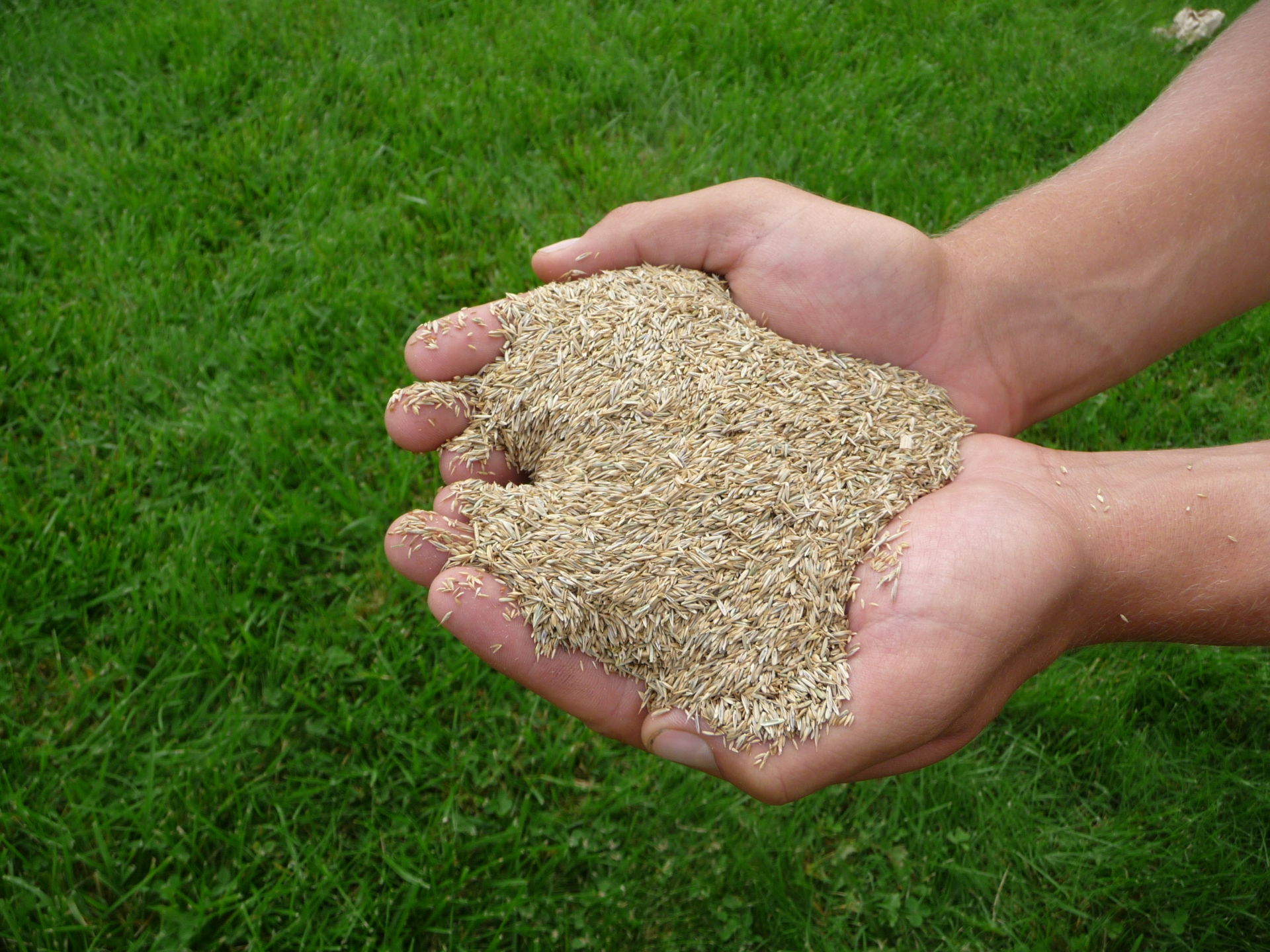Hot August Nights
Garden Clippings for September 1, 2018
The wonderful thing about hot August nights is that they really aren’t hot. The region’s hottest nights happen in July, and as summer moves through August, night-time temperatures usually cool off quite comfortably. Bedroom windows can often be opened up so we don’t need to rely on the A/C to get a good night’s rest.
Cool August nights are always followed by morning dew. In fact, the lower the temperature at night, the heavier the dew in the morning. That bodes well for gardeners wanting to sow grass seed because fall’s heavy dew will guarantee a quick successful catch.
Early fall is prime grass seeding time because new seed does not need to be watered. Commercial sod growers always sow their new crop in early fall because seed becomes damp just after suppertime and remains damp all night long. Heavy dew will often persist until noon the following day.
The steps to sowing grass seed are the same if you are seeding a new lawn or repairing an old established lawn.
Start by killing off any poor-quality turf and weeds in order to start with a clean slate. Use a hoe, cultivator, sod cutter or organic herbicides.
Step two involves fixing grading problems. Fill low spots with soil and add soil near the house to ensure the slope runs downhill away from the house.
Step three: consider amending the soil. This is your best opportunity to add compost, fertilizer, lime or topsoil. If your soil is sandy, add compost in to improve the soil’s moisture holding capacity. If your soil is clayey, compost will loosen the soil and improve its texture.
Step four: use a landscape rake to achieve a smooth level surface. Take your time and remove all debris, roots and rocks.
Step five is the critical job of choosing the right grass seed for your application. Almost all lawn seeds for residential use contain a blend of seed types. Kentucky Bluegrass, the most popular, will give you a fine, dark green lawn. But Kentucky Bluegrass needs the assistance of other grasses in order to grow successfully. Perennial Ryegrass grows quickly and makes for a hardy easy-care lawn. Perennial Ryegrass also fills the role of being a nurse grass to assist the growth of Kentucky Bluegrass.
Creeping Fescue grass is quickly gaining notoriety for its disease resistance, draught tolerance and ability to grow in shade. Poa trivialis is beneficial in mixtures that are destined for shade gardens. Do the research and consult a professional in order to choose the right seed mix for your lawn. Seed blends marked as Canada #1 seed mix will give you assurances that seed is viable. Don’t be fooled by buying cheap seed that may contain annual ryegrass. Don’t be tempted to buy expensive coated seed because it is not worth the money and provides poor coverage.
Apply seed at the rate of 1 pound covering 250 square feet, or 1 kg covering 500 sq feet (50 sq metres). Grass seed is not expensive so don’t be afraid to put down a little extra. Once the seed is sown, I recommend using the back side of a garden rake to scratch the soil surface once and help spread the seed evenly.
If all goes well, you should begin to see seed sprouting 7 to 10 days after sowing. In a few weeks the new grass will look a thin but can be cut with a light mower. After the grass has been cut 3 or 4 times, give an application of lawn fertilizer to encourage dense growth.


